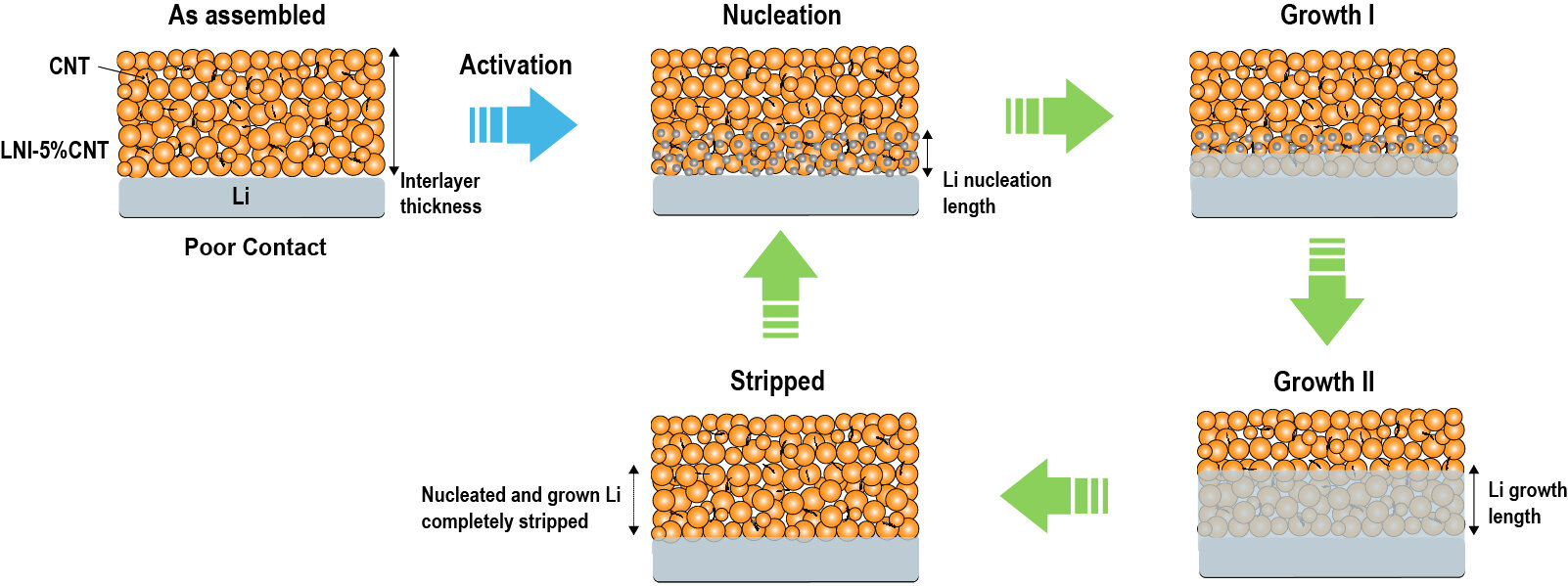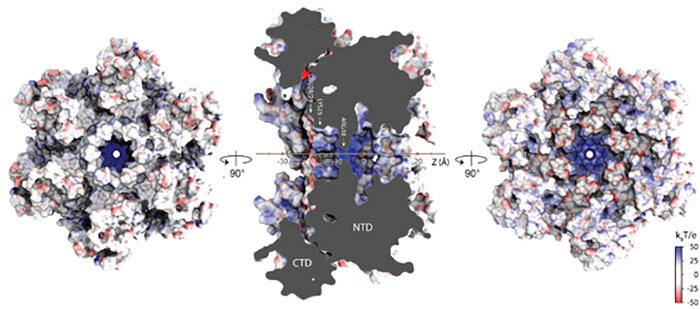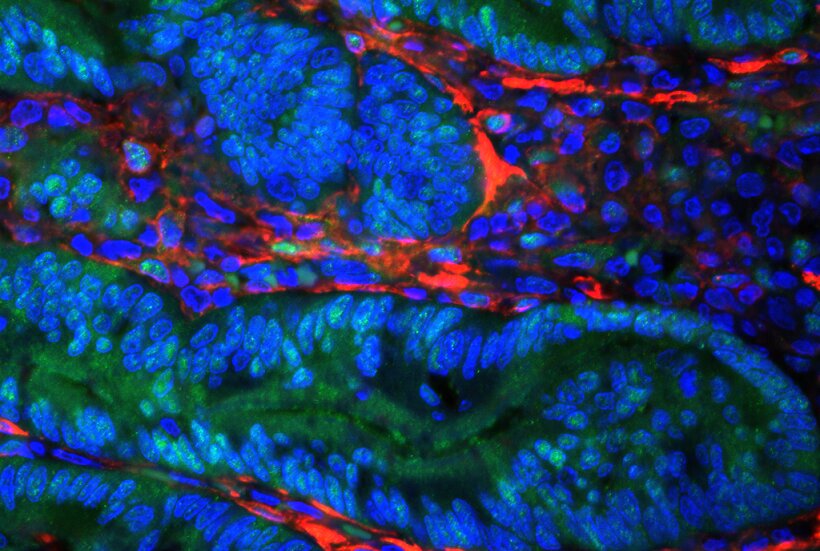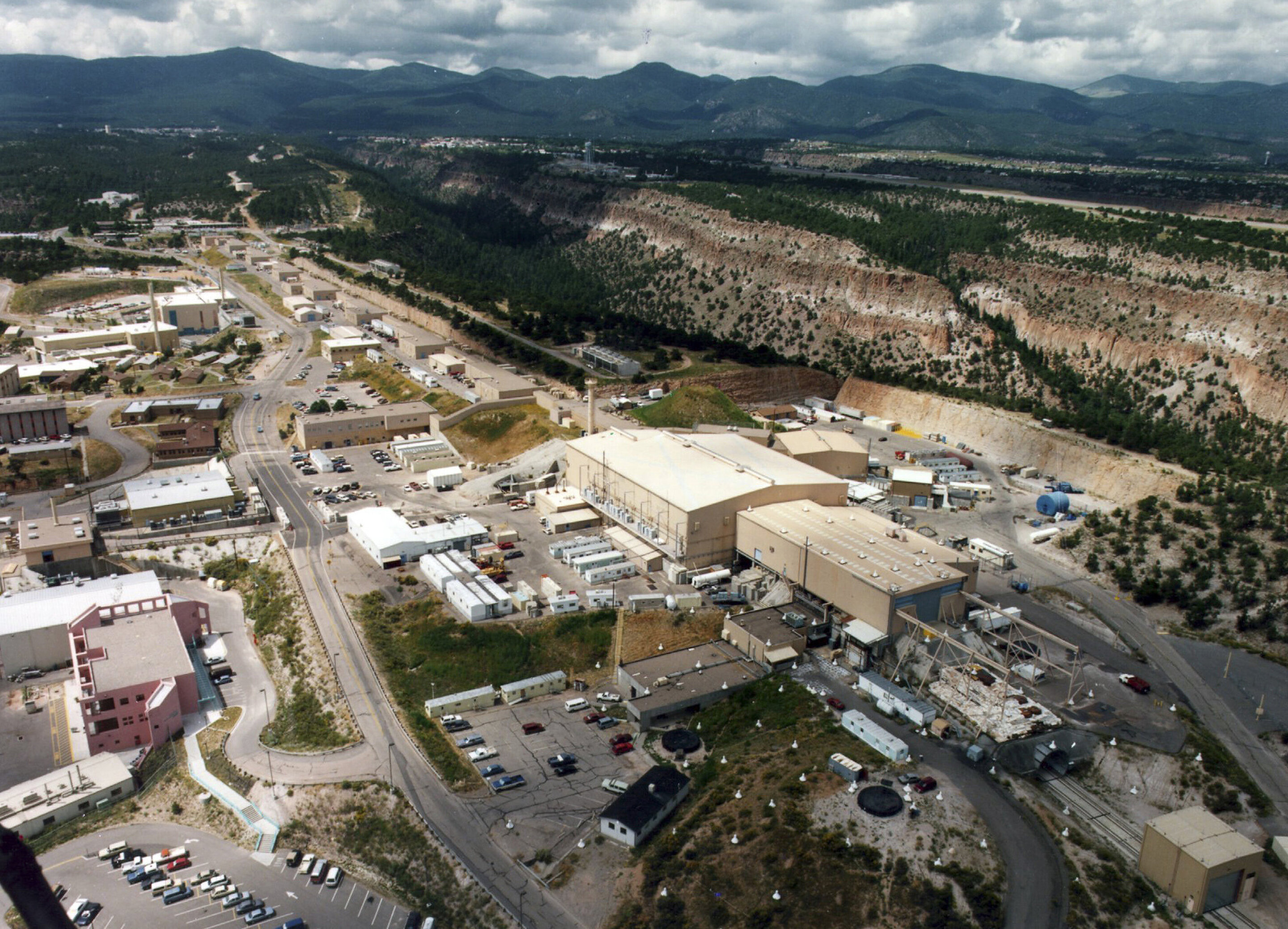#A strategy to design lithium anode interlayer for all-solid-state lithium-metal batteries


Over the past decades, engineers and chemists have been working to develop increasingly advanced battery technologies that could help to meet the rising demands of the electronics industry. This has led to the emergence of new types of batteries, including all-solid-state batteries.
All-solid-state batteries (ASSBs) are battery cells that include a solid electrolyte situated between two electrodes. These batteries, particularly all-solid-state lithium-metal batteries (ASSLBs), can exhibit high energy densities and greater safety, addressing some of the limitations of conventional lithium-ion battery (LiB) designs.
Despite their advantageous properties, ASSLBs have not yet been deployed on a large scale. This is partly because the growth of Li dendrites and their high interface resistance can significantly impair their performance.
Researchers at University of Maryland recently introduced a new principle for designing safe and high energy ASSLBs. This principle, outlined in Nature Energy, could help to develop more powerful and reliable fuel cells for electric vehicles and large robotic systems.
“Current effort to tackle the lithium dendrite issue of all-solid-state batteries relies on trial-and-error experiments,” Zeyi Wang, first author of the paper, told Tech Xplore. “Instead of just reporting one single interlayer, this paper aims to develop an interface design principle that can guide the fabrication of a series of interlayers. This is a way to fully solve the lithium dendrite issue in all-solid-state batteries.”
The key objective of the recent work by Wang and his colleagues was to identify a promising strategy to mitigate Li-dendrite growth in ASSLBs. To achieve this, the team proposed the introduction of a special layer between the lithium anode and solid electrolyte in battery cells.
“Adding a special layer between the lithium anode and the solid electrolyte can potentially tackle lithium dendrites issues, but the properties of the interlayer are of key importance to attain this,” Wang explained. “Our design principle correlates battery stabilities with several key properties of interlayer. Specifically, it highlights that the interlayer should be lithiophobic (i.e., repelled by lithium metal), highly ionic conductive and slightly electronic conductive, and porous.”
As part of their study, the researchers used their design principle to create a Li4SiO4@LiNi0.8Mn0.1Co0.1O2/Li6PS5Cl/20 µm-Li battery cell with an area capacity of 2.2 mAh cm-2. In initial tests, these battery cells were found to perform remarkably well, retaining 82.4% of their capacity after 350 operation cycles at 60° C at a rate of 0.5 C.
“While previous studies introduced many interfaces for lithium dendrite suppression, their underlying mechanism was not explained clearly and the design cannot be generalized,” Wang said. “The success of our design principle is that it opens new opportunities to develop safe batteries.”
Notably, the design principle introduced by Wang and his colleagues could be applied to a wide range of ASSBs, helping to suppress Li-dendrite formation and thus enhancing battery performance. Therefore, it could soon pave the way for the development of a wide range of safe and highly performing battery technologies containing solid electrolytes, which could power electric vehicles and other large electronics.
“In our next studies, we will test more interfaces to modify and verify the design principle,” Wang added. “We will then optimize the materials of the interface based on design principles. We plan to scale up for manufacturing and ultimately test the device on vehicles in the future.”
Zeyi Wang et al, Lithium anode interlayer design for all-solid-state lithium-metal batteries, Nature Energy (2024). DOI: 10.1038/s41560-023-01426-1
© 2024 Science X Network
Citation:
A strategy to design lithium anode interlayer for all-solid-state lithium-metal batteries (2024, February 3)
retrieved 3 February 2024
from https://techxplore.com/news/2024-01-strategy-lithium-anode-interlayer-solid.html
This document is subject to copyright. Apart from any fair dealing for the purpose of private study or research, no
part may be reproduced without the written permission. The content is provided for information purposes only.
If you liked the article, do not forget to share it with your friends. Follow us on Google News too, click on the star and choose us from your favorites.
If you want to read more Like this articles, you can visit our Science category.



